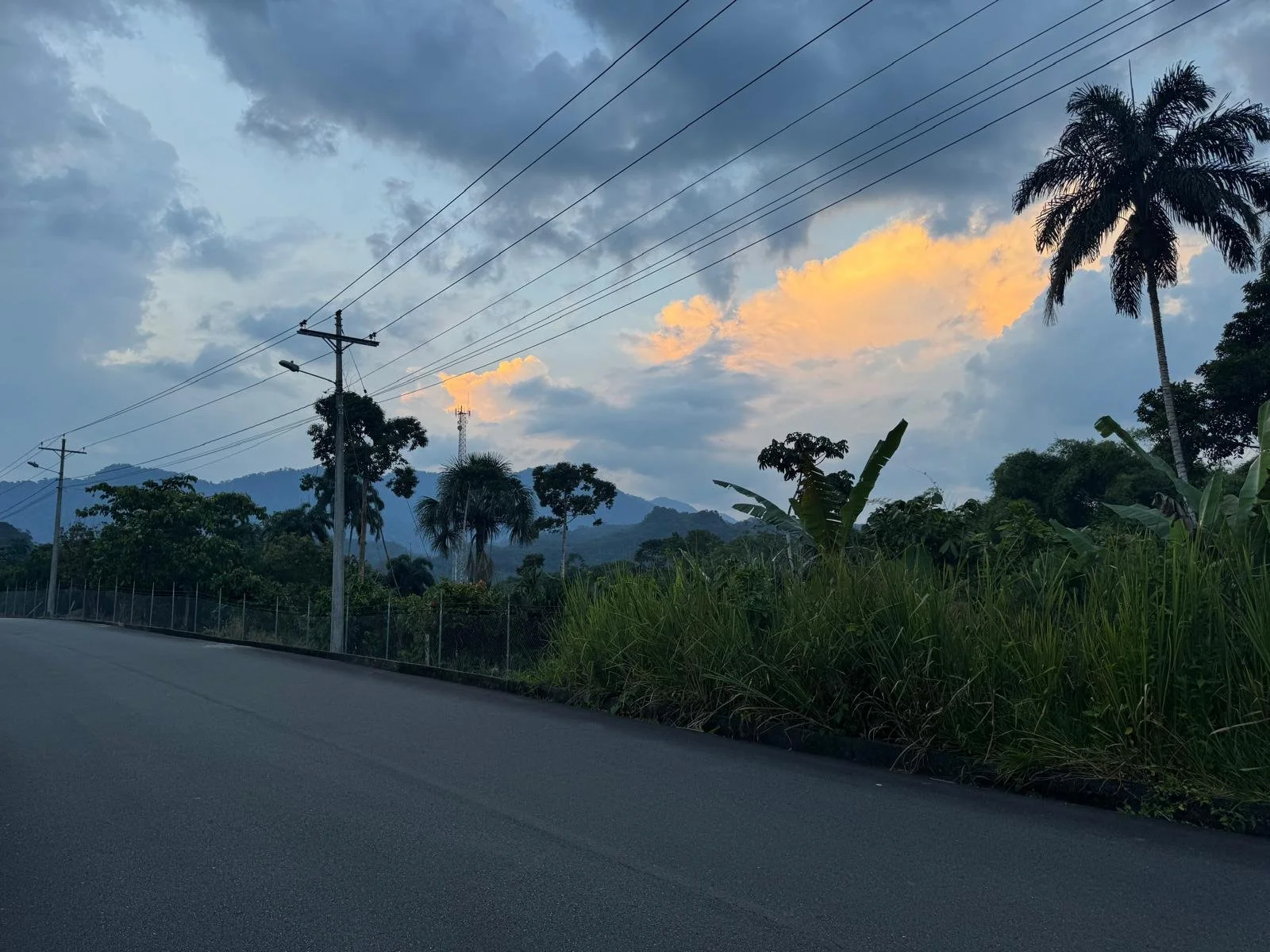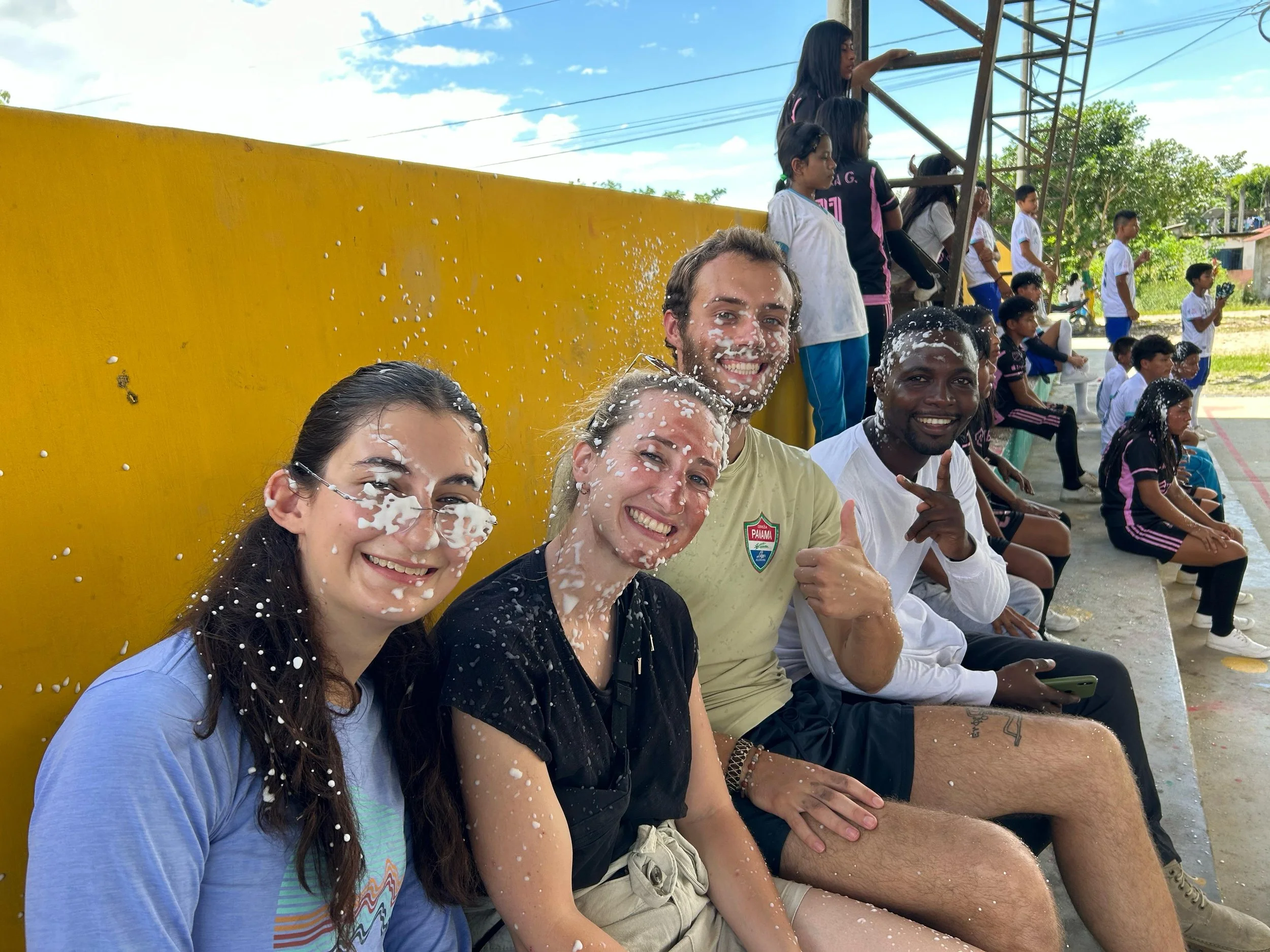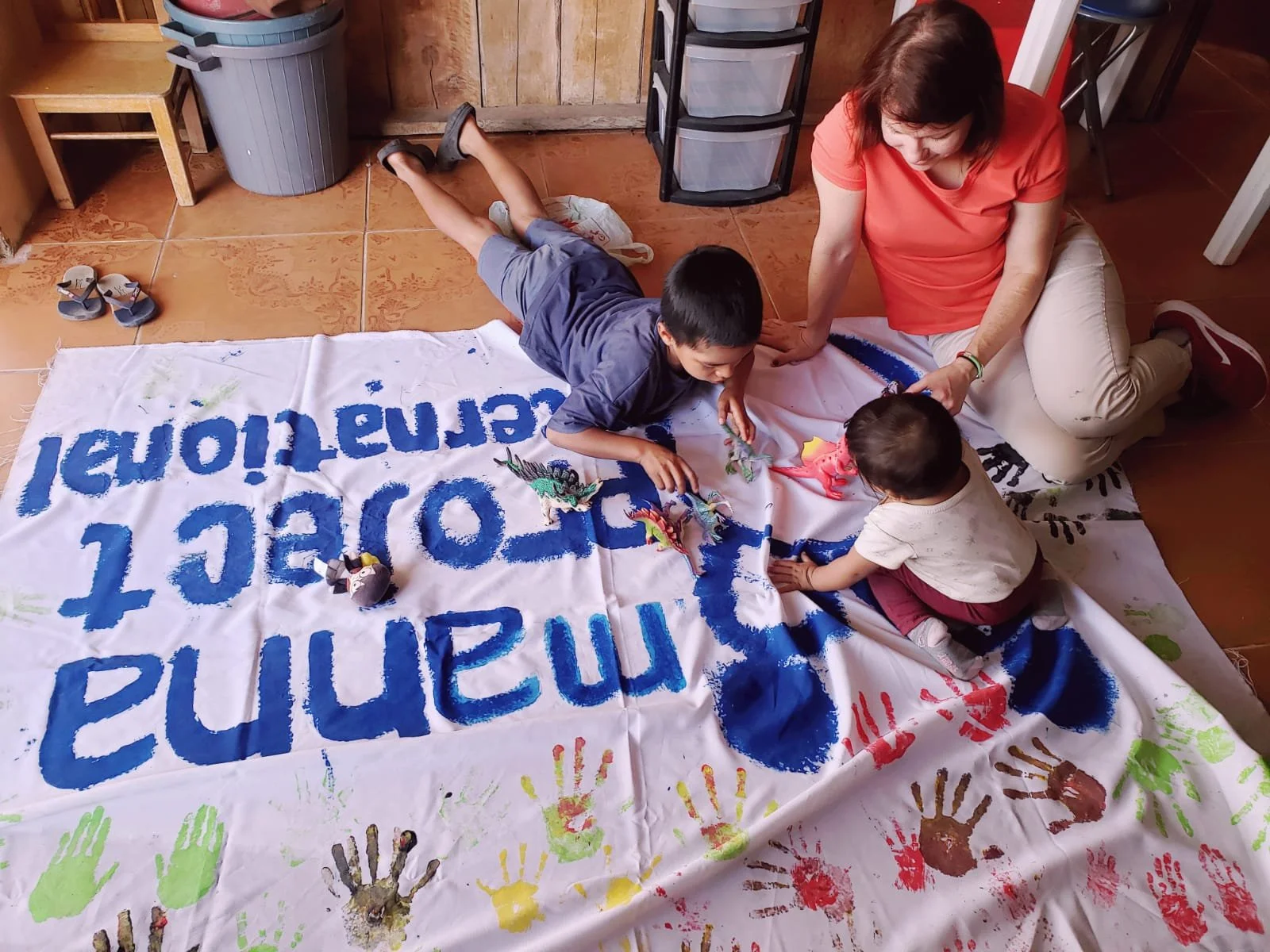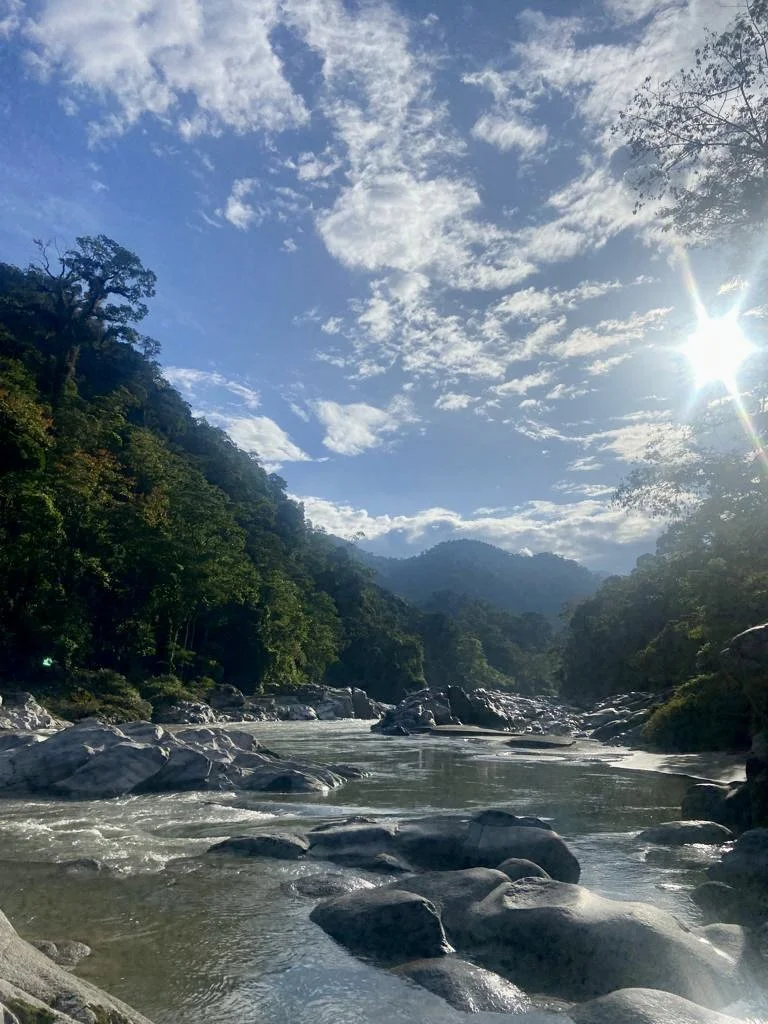Even if you had told me six months ago that I would be spending much of my time working with children, I would never have believed you. But, since coming to Ecuador, the bulk of my free time has been spent voluntarily playing with the children of Alto Talag.
My Community is my Classroom
By: Patrick Maluwa, Program Director 2024
Sometimes when we think about learning, we have very specific ideas: desks, a blackboard, someone standing in the front of the classroom talking.. But that’s not the only way to learn and, at Manna, we don’t even think it’s the best way to learn. Let’s let our Program Director, Patrick Maluwa ‘24, tell us a bit more about how he learns while being onsite in the Amazon Rainforest..
My time here in Ecuador with Manna Project International has been incredible. Working alongside the wonderful people of the Shandia community has been both fulfilling and enlightening. The warm reception I've received from everyone here has made my experience truly special, but being so far from my own country and culture has given me new experiences and opportunities that I can’t wait to take back home with me.
One of the highlights has been indulging in the delicious cuisine of the Amazon, particularly within the Shandia Kichwa community. From mouthwatering dishes like maito de pollo, maito de tilapia, and mote to unique beverages such as chontaculo, chicha de yuca, and chicha de chonta. Each meal and drink has been a delightful journey into local flavors and traditions. What's even more exciting is that I've had the opportunity to learn how to prepare these dishes through our women's group, adding a new skill to my repertoire. Through these cooking sessions (and living day to day), I have been able to immerse myself in language and culture. I've been actively learning both Spanish and Kichwa through interactions with the community members, which has been incredibly rewarding.
The agricultural project we have has helped me gain insights into Kichwa farming practices and cultural traditions. Spending time in people's chakras (farming fields) has provided me with a deeper understanding of how farming serves as more than just a source of food; it's also a vital part of the community's identity, providing medicine, such as balbasco, which is used to heal a person when he/she is having muscle pain, and dragon tree, which helps when when someone has a cut. Income and even materials for crafts like bracelets are also some of the ways how people are also benefiting from their chakras, which has been inspiring to see how much benefit comes from living sustainably. Also, personally, I have gotten to know different kinds of fruits that I didn't know before such as Chirimoya, Pitahaya (dragon fruit), Achotillo, Cacao and Maracuyá (passion fruit), which all are very nice and sweet in taste so it’s also been a very tasty experience for me.
When I have free time I spend it chatting with people in the community and through that I have also learnt that people work together when doing a community project called a “Minga.” Mingas are very nice and I have attended four mingas here in Shandia . I have learnt a lot from working together with the community to achieve a common goal. One of the mingas I have attended is when we were constructing a school library it was nice as I had a chance to hear different stories about the community and the culture, eat together with people, learn how important it is to work as a team as work is done very fast as people here are very committed to work that aims at developing the community. They also have unique cultural customs. One such custom is putting chili in the eyes of newborn children who are 5 years old for the reason that they have to be strong and they don't get sick very easily. Not only that but also they have to be well mannered and hard-working children. The women who plant yucca paint their foreheads with achiote in the form of a cross and carry forest leaves to bless the yucca stakes. Before planting yucca, they perform a preparatory ceremony to get the help of natural forces such as the chakra amu, and the chakra amu represents their connection to the earth, their ancestors, and their sustenance. This involves the use of face paints made with the plant called manduru.
I'm grateful for the opportunity to be part of this community of Shandia and work with the people while learning from them. I hope to have more stories and experiences to share with my people in my home country Malawi.
About the author:
Patrick Maluwa is a recent graduate from Lilongwe University of Agriculture and Natural Resources where he studied Gender and Development Studies. Patrick has a strong desire to make positive impact and has worked on various social justice campaigns and initiatives in Malawi, skills that he hopes to build upon and return to his home community in Lilongwe. A farmer by trade, Patrick is responsible for MPI’s sustainability and agricultural initiatives in the community of Shandia.
What to Ask When You Want to Volunteer Abroad to Avoid White Saviorism
There are so many things that you need to consider when you travel abroad or volunteer abroad in 2024 that it’s hard to know where to start! You are probably considering your long term impact on the community and earth, the sustainability of the programs that you’re joining onto, whether or not you’re contributing to a sustainable solution to systemic challenges, the culture that you’re stepping into and how to best respect it, how to make an impact abroad without playing into white saviorism and colonialist tropes, and that’s before you think about your own logistics and challenges.
When Soccer Isn't Just a Sport: Futbol in Shandia
Growing up in Maryland, I played soccer until around middle school, when I realized I wasn’t all that good at it and that I was in love with basketball instead. Since then, I’ve been known to kick the occasional ball around, but I was pretty nervous when I was invited, along with my friend and fellow PD Patrick, to play for Once Valientes B (in English: eleven brave ones) in the Shandia soccer league.
Music, Colors, Foods … and lots of Laughter - Carnaval in Shandia
As in many parts of the world, this past week in Shandia was all about the celebration of Carnaval. Originally coming from an area that calls the local Carnival the annual “fifth season”, I was especially excited to see what Carnaval in Ecuador would look like. What would the local customs, foods and music be like?







